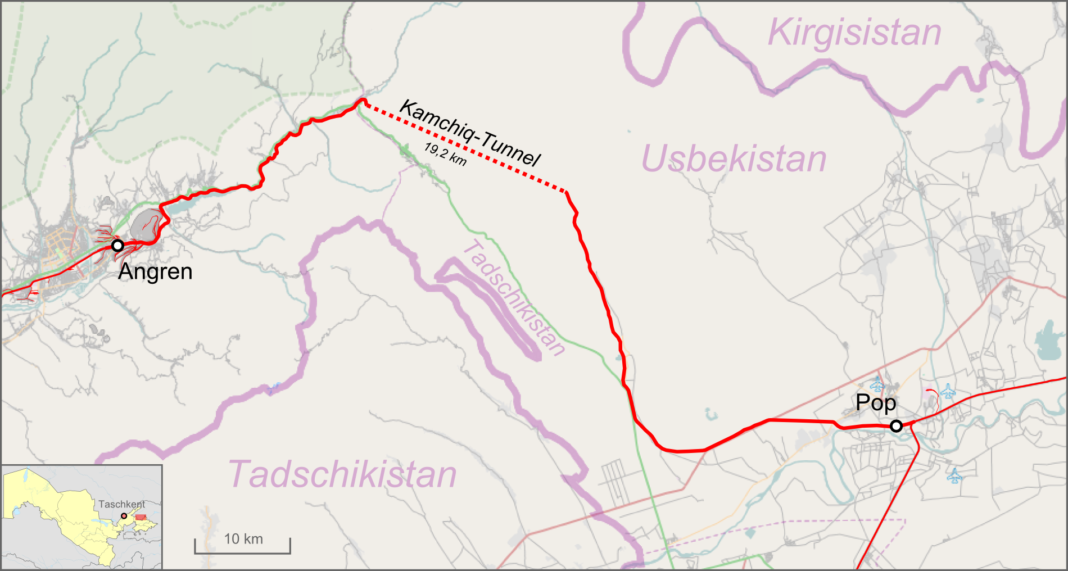The Kamchiq (or Qamchiq) Tunnel is a 19.2 kilometers (11.9 mi) long railway tunnel in Uzbekistan, which makes it the longest tunnel in Central Asia and in ex-USSR, and the longest broad gauge railway tunnel in the world (not counting metros).
The tunnel was built by the China Railway Tunnel Group in collaboration with the Uzbek Railways and leads through seven geologic faults. Construction began September 2013 and the excavation works were finished 27 February 2016. In January 2014, work was delayed by an avalanche, covering the entrance with 78 meters (256 ft) of snow.

The tunnel is part of the Angren-Pap railway line. The tunnel was opened for traffic on June 22, 2016.
Benefiting from the opening to traffic of the Kamchiq tunnel, the transportation distance from the Ferghana Basin to Tashkent, the capital of Uzbekistan was reduced by 100 kilometers, saving nearly 2 hours, which has greatly facilitated the travel of local people. The Ferghana Basin is the important producing area of cotton, grain, fruits and vegetables of Uzbekistan. By the advantage of railway, Tashkent citizens may taste fresh vegetables and fruits picked in the Ferghana Basin daily. Coal, oil and other resources produced in the Ferghana Basin will be transported to the industrial plants in the central and western parts of Uzbekistan.
The Kamchiq Tunnel is a critical section on the Angren-Pap railway line; it has been listed as one of the early achievements of the Belt and Road Initiative. The completion of the project has changed the dilemma of bypassing other countries. It has become a new hub connecting China, Central Asia and European transportation corridors, and has promoted the political and economic development in Uzbekistan.
According to Wikipedia; crecg















